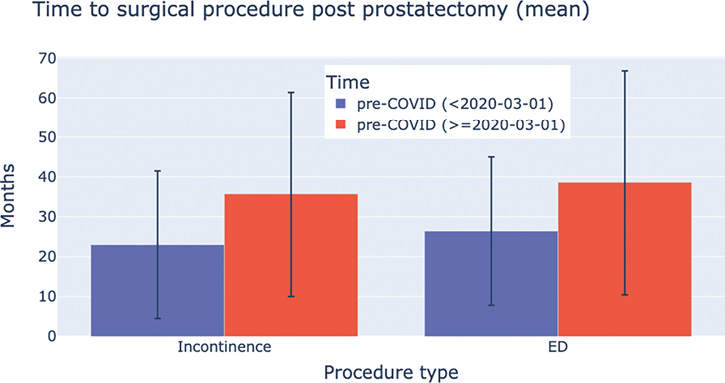Attention: Restrictions on use of AUA, AUAER, and UCF content in third party applications, including artificial intelligence technologies, such as large language models and generative AI.
You are prohibited from using or uploading content you accessed through this website into external applications, bots, software, or websites, including those using artificial intelligence technologies and infrastructure, including deep learning, machine learning and large language models and generative AI.
AQUA IN ACTION Regional and Time Trends in Post-Prostatectomy Interventions
By: Jennifer Bepple, MD; Marie Humbert-Droz, PhD; Junlin Jiang, PhD; Daniel Lee, MD | Posted on: 01 Sep 2022
Urinary incontinence and erectile dysfunction (ED) are common and debilitating complications for prostate cancer survivors who underwent radical prostatectomy. Surgical treatments for incontinence and ED are associated with high satisfaction and overall success rates. During COVID, many elective procedures were often delayed or avoided altogether. The impact of the pandemic on the timing of surgical therapy has not been previously studied. In cooperation with Verana Health, we evaluated the timing of urological procedures to address side effects of ED and urinary incontinence following prostatectomy over time using the national AUA Quality (AQUA) Registry from January 1, 2012 to February 27, 2022.
 Figure. Trends in procedures during COVID.
Figure. Trends in procedures during COVID.
Over the 10-year study period, we identified 41,171 patients who underwent prostatectomy and had at least 12 months of followup available. Within this cohort, 89.4% had undergone a robotic or laparoscopic prostatectomy, while the remaining had an open procedure. There were 2,298 (5.6%) patients who received at least one of the selected supportive procedures to treat incontinence or ED post-prostatectomy. About half (1,159, 50.4%) of these were procedures for ED, followed by slings (859, 37.4%), artificial urinary sphincter procedures (749, 32.6%), and insertion of bulking agents (137, 5.97%). Overall, the average time to the first surgical intervention for ED or incontinence was 25.4 months (SD 18.5). There has been a significant delay in time to surgical treatment following March 1, 2020 (“post-COVID”) compared with “pre-COVID” (before March 1, 2020). The average time to intervention was 25.2 months (SD 18.6) pre-COVID and has been delayed to 36.8 months (SD 26.7) post-COVID (p <0.01; see Figure).
Regional differences highlight that the average time to surgical intervention for ED and incontinence in the West was the shortest at 20 months post-prostatectomy, compared with 30.4 months in the Northeast. Furthermore, there are regional trends in the rates at which patients undergo surgical intervention for ED or incontinence post-prostatectomy. The Northeast region has the highest rate of surgical intervention for ED or incontinence at 9.1%, compared with the Southwest, where the rate of intervention is 3.5%. In all regions, except for the West, a penile implant was the most common procedure performed. In the West, an artificial urinary sphincter was performed more frequently.
The AQUA data show a small percentage of patients after prostatectomy undergo surgical intervention for ED or urinary incontinence, with regional variability. The total number of patients receiving these interventions is potentially underestimated in this current analysis given the known phenomenon of patients having multiple providers who may or may not be included in the AQUA Registry. As expected, policy and practice changes required during COVID did result in a measurable delay in receipt of these symptom-management interventions. There is a need to understand if these variabilities in care delivery result in differences in quality of life in prostate cancer nationwide.
